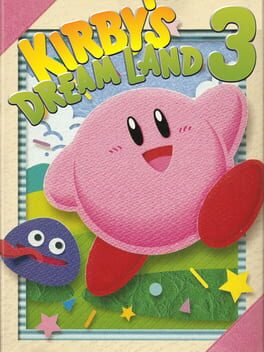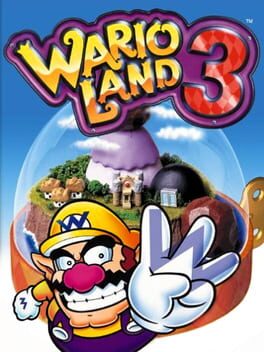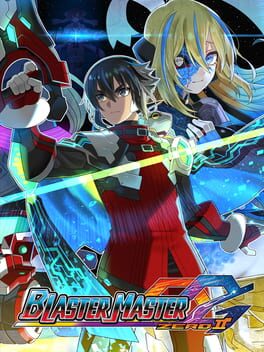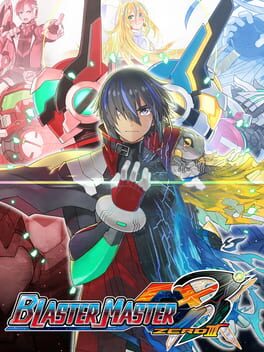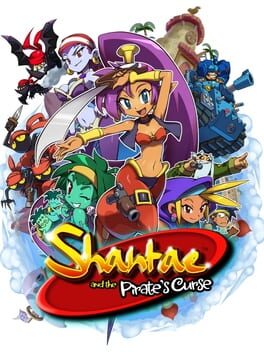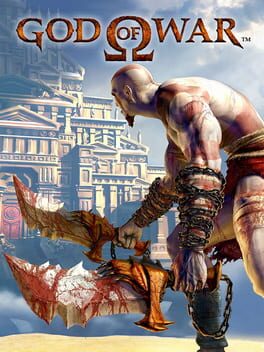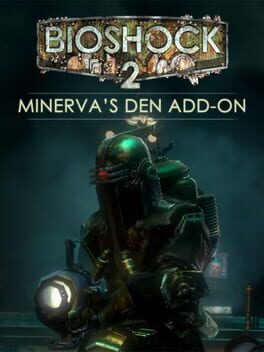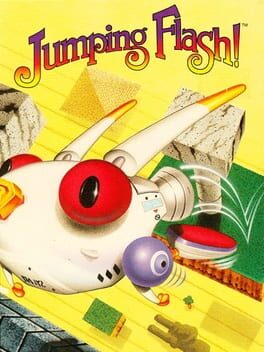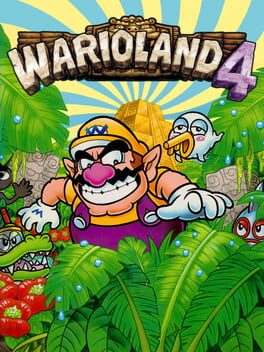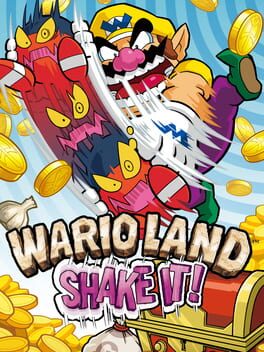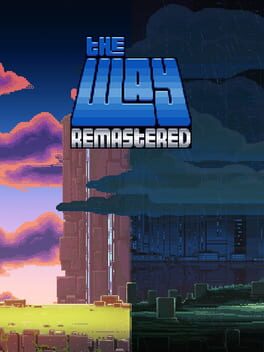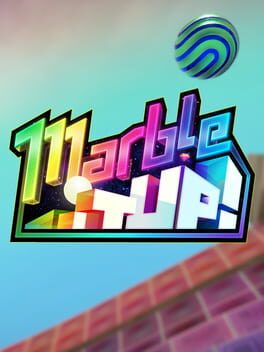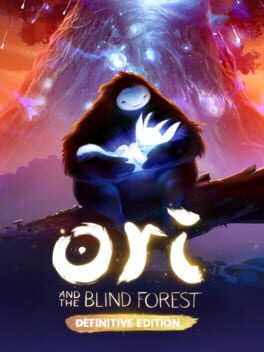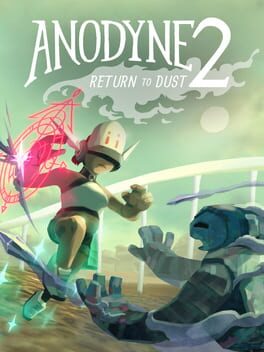DeltaWDunn
1997
Well then. I'm sure you all know Kirby (Or, at least, know of him). I certainly have for quite a while. Many people regard it as a series with no bad games. I would say that this game is clear evidence to the contrary.
From the Kirby games I've played, I've noticed that there's two ways to make the gameplay engaging:
1. Small sections that are built around a copy ability that can be easily obtained beforehand. These sections are fun and often reward the player for keeping the copy ability with lives or something else.
2. Pure combat sections in which the player can choose a copy ability to use. Fun here is derived from using varied moves to defeat a boss or something of the sort.
I haven't played every Kirby game, and I'm sure there's another way to make a Kirby game engaging, but regardless, a Kirby game needs to be accessible to children but still pique the interest of adults in some way. Kirby's Dream Land 3 does neither, and is an abject failure in being interesting in any way.
Copy abilities have regressed from Superstar into being the simple one-attack abilities from previous entries. This already greatly limits the potential of Kirby design #2. Not automatically an issue, as I think Kirby's Adventure on the NES is one of the best in the series, because it uses Kirby design #1. Levels feel best when using the copy abilities acquired in them, but are still beatable without them. However, would you believe me if I said Dream Land 3 had LESS THAN A THIRD of the copy abilities from Adventure? Once again, not automatically bad, as the animal buddies that help kirby actually change the way copy abilities are used. But there was one fatal mistake. Everything else aside, one thing doomed this game.
Around 80% of the time, the animal buddies are a worse option than just using Kirby by himself.
Imagine if you were playing as Yoshi in super Mario World, except Yoshi is a bit slower and can't jump as high as Mario. That is a rough equivalent of the animal buddies in Kirby's Dream Land 3. Kirby can float, so why would I use Riki, who can only jump once? Coo and Kine are slower than Kirby, so why use them? Even if one may fit a situation, you have to grapple with the altered copy abilities, which can be ridiculously niche in terms of use compared to Kirby's. The only one who was fairly consistently fun to use was Nago, because he was fairly fast, could jump two times in midair (Which was usually good enough), and usually had good copy abilities. The others are almost always detrimental to use in one way or another. Unfortunately, though, I didn't always get to use Nago, as there's usually only around half of the animal buddies in a given stage placed at checkpoints. Despite this, I rarely ever got the feeling that the levels were designed with the animal buddies in mind. Even when they're designed with copy abilities in mind, it's usually just 'hit this block with this copy ability to break it', the laziest way to do it.
There are several other issues. Kirby often outruns the camera, which results in enemies landing cheap shots. the level select and optional content is barebones compared to even Kirby's Adventure. Gooey, the player 2 character, is useless. The game loves autoscrolling sections for no reason. All of the secrets are super obscure and not fun to find. It only contributes even more to the low quality.
The biggest positive I can give this game is that it's a beautiful game. It has great style and animation. Everything else? Okay at best. This brings us back to the statement, "there are no bad Kirby games". Honestly, as bad as this game was, it was, at the end of the day, really easy. I rarely got actually frustrated as a result. However, I never got particularly happy playing it either. I rarely felt anything. Honestly, I think that's one of the worst things a game can be: Absolutely nothing. This game isn't legendarily bad; It's just... boring bad. And I'll probably never play it again.
From the Kirby games I've played, I've noticed that there's two ways to make the gameplay engaging:
1. Small sections that are built around a copy ability that can be easily obtained beforehand. These sections are fun and often reward the player for keeping the copy ability with lives or something else.
2. Pure combat sections in which the player can choose a copy ability to use. Fun here is derived from using varied moves to defeat a boss or something of the sort.
I haven't played every Kirby game, and I'm sure there's another way to make a Kirby game engaging, but regardless, a Kirby game needs to be accessible to children but still pique the interest of adults in some way. Kirby's Dream Land 3 does neither, and is an abject failure in being interesting in any way.
Copy abilities have regressed from Superstar into being the simple one-attack abilities from previous entries. This already greatly limits the potential of Kirby design #2. Not automatically an issue, as I think Kirby's Adventure on the NES is one of the best in the series, because it uses Kirby design #1. Levels feel best when using the copy abilities acquired in them, but are still beatable without them. However, would you believe me if I said Dream Land 3 had LESS THAN A THIRD of the copy abilities from Adventure? Once again, not automatically bad, as the animal buddies that help kirby actually change the way copy abilities are used. But there was one fatal mistake. Everything else aside, one thing doomed this game.
Around 80% of the time, the animal buddies are a worse option than just using Kirby by himself.
Imagine if you were playing as Yoshi in super Mario World, except Yoshi is a bit slower and can't jump as high as Mario. That is a rough equivalent of the animal buddies in Kirby's Dream Land 3. Kirby can float, so why would I use Riki, who can only jump once? Coo and Kine are slower than Kirby, so why use them? Even if one may fit a situation, you have to grapple with the altered copy abilities, which can be ridiculously niche in terms of use compared to Kirby's. The only one who was fairly consistently fun to use was Nago, because he was fairly fast, could jump two times in midair (Which was usually good enough), and usually had good copy abilities. The others are almost always detrimental to use in one way or another. Unfortunately, though, I didn't always get to use Nago, as there's usually only around half of the animal buddies in a given stage placed at checkpoints. Despite this, I rarely ever got the feeling that the levels were designed with the animal buddies in mind. Even when they're designed with copy abilities in mind, it's usually just 'hit this block with this copy ability to break it', the laziest way to do it.
There are several other issues. Kirby often outruns the camera, which results in enemies landing cheap shots. the level select and optional content is barebones compared to even Kirby's Adventure. Gooey, the player 2 character, is useless. The game loves autoscrolling sections for no reason. All of the secrets are super obscure and not fun to find. It only contributes even more to the low quality.
The biggest positive I can give this game is that it's a beautiful game. It has great style and animation. Everything else? Okay at best. This brings us back to the statement, "there are no bad Kirby games". Honestly, as bad as this game was, it was, at the end of the day, really easy. I rarely got actually frustrated as a result. However, I never got particularly happy playing it either. I rarely felt anything. Honestly, I think that's one of the worst things a game can be: Absolutely nothing. This game isn't legendarily bad; It's just... boring bad. And I'll probably never play it again.
2000
I'll start with negatives: The way coins were handled. The only use they have is to play that dumb golf minigame (That I'll get to). I had 999 coins, the max amount, for a majority of the playthrough. Also, the 8 big coins in each stage reset if you don't collect them all. What do you get if you collect them all? Our friend from about 4 sentences ago, that dumb golf minigame.
The golf minigame isn't particularly hard or detrimental, but it's undeniably poorly designed. The courses seem random; Sometimes they were extremely hard, the next would be extremely easy. Many times you'd have to make a blind shot due to the strict number of shots and the Gameboy's poor visibility. It rarely took me more than three times to beat, but it's a shame that the only minigame in here is bad.
Anyway, let's get into the goods: The game keeps a lot from Wario Land 2. The unconventional 'powerups' and general moveset are the same. However, the general design and structure is very different. In Wario Land 3, you don't lose coins for getting hit. Instead, getting hit is usually punished with one of the 'powerups' or just getting knocked down from a platforming section. Like I said, coins aren't really that valuable here, so I'm fine with that (Although coins COULD'VE been more valuable in a game about Wario). This also let the creators experiment more with the level design. Here's an example: The spring powerup makes Wario constantly jump around for a while. This is a positive for certain platforming sections. However, it can be a negative if put in a bossfight with several platforms above it, because Wario will jump out of the arena in spring form and can't return easily. As such, a button to undo this powerup isn't an option, as it could ruin a boss' difficulty. This could mean the player would have to wait for Wario to exit spring form in many cases, which could be annoying. HOWEVER, spikes knock Wario out of spring form, and they're often conveniently placed near the spring powerup. So now, just like the spring, the spikes can be beneficial or detrimental depending on context. In my opinion, this is brilliant game design that challenges the player to always think about their surroundings and current state.
This doesn't even touch the non-linear structure with powerups earned overtime. That's right, Wario Land 3 is a Castleroid of sorts. I'm not gonna lie, having to wait a good third of the game before being able to pick up stuff irked me a bit after playing WL 1 and 2, but Wario Land 3 did what it needed to do with most of its powerups: Something interesting. Some were pretty unimpressive, like an upgraded charge, but the high jump, throwing, ground pound, and others are all pushed in interesting directions. I imagine the structure of this game would make replays vastly different, as there's a fork in which stages you can tackle pretty early on.
Honestly, I'm almost tempted to give this game a 9/10. However, it has some clear flaws, so an 8/10 for now. Play this game. Play every Wario Land game. The series gets better with every entry (Note: I haven't played Shake It!! yet).
The golf minigame isn't particularly hard or detrimental, but it's undeniably poorly designed. The courses seem random; Sometimes they were extremely hard, the next would be extremely easy. Many times you'd have to make a blind shot due to the strict number of shots and the Gameboy's poor visibility. It rarely took me more than three times to beat, but it's a shame that the only minigame in here is bad.
Anyway, let's get into the goods: The game keeps a lot from Wario Land 2. The unconventional 'powerups' and general moveset are the same. However, the general design and structure is very different. In Wario Land 3, you don't lose coins for getting hit. Instead, getting hit is usually punished with one of the 'powerups' or just getting knocked down from a platforming section. Like I said, coins aren't really that valuable here, so I'm fine with that (Although coins COULD'VE been more valuable in a game about Wario). This also let the creators experiment more with the level design. Here's an example: The spring powerup makes Wario constantly jump around for a while. This is a positive for certain platforming sections. However, it can be a negative if put in a bossfight with several platforms above it, because Wario will jump out of the arena in spring form and can't return easily. As such, a button to undo this powerup isn't an option, as it could ruin a boss' difficulty. This could mean the player would have to wait for Wario to exit spring form in many cases, which could be annoying. HOWEVER, spikes knock Wario out of spring form, and they're often conveniently placed near the spring powerup. So now, just like the spring, the spikes can be beneficial or detrimental depending on context. In my opinion, this is brilliant game design that challenges the player to always think about their surroundings and current state.
This doesn't even touch the non-linear structure with powerups earned overtime. That's right, Wario Land 3 is a Castleroid of sorts. I'm not gonna lie, having to wait a good third of the game before being able to pick up stuff irked me a bit after playing WL 1 and 2, but Wario Land 3 did what it needed to do with most of its powerups: Something interesting. Some were pretty unimpressive, like an upgraded charge, but the high jump, throwing, ground pound, and others are all pushed in interesting directions. I imagine the structure of this game would make replays vastly different, as there's a fork in which stages you can tackle pretty early on.
Honestly, I'm almost tempted to give this game a 9/10. However, it has some clear flaws, so an 8/10 for now. Play this game. Play every Wario Land game. The series gets better with every entry (Note: I haven't played Shake It!! yet).
I meant to buy the first Blaster Master Zero, but I somehow accidentally bought the second, so here I am.
Blaster Master Zero 2 is the second in a revival series of the NES game Blaster Master. It's kind of a Castleroid, but not really. While the game does indeed have a somewhat interconnected map and upgrades, there are several planets that you unlock in different levels. While there is interplanetary backtracking, very rarely will one be required to return to a planet after doing the main object (Unless you want the good ending, that is). Even so, the game never feels restrictive and does give freedom in how you tackle many of the missions. It also helps that the Tank sections are really fun. Most of the weapons are fun to use, and while movement options like Dashes, Wall Jumps, and Ground Pounds, and hovers are ridiculous to see a Tank do, they're pretty fun.
The Top-Down sections are good too, but I had a few issues. You see, in the Tank sections are pretty simple. The basic guns are your bread and butter. The special moves use gaia power, which is recharged by... jumping from a high place. It's pretty simple.
The Top-Down sections have the upgradeable blaster, a selection of grenades, and multiple counter moves. I think that there's a bit too much to deal with here. All of the 8 blaster settings are somewhat different, but I rarely felt compelled to use half of them. The same goes with many of the grenades. The counters are interesting and executed fairly well (Although I kinda wish the dash move was independent of it so I could use it without countering). Apparently Blaster Master Zero 3 simplified it with only one counter and Five Blaster Options with statistical upgrades, which sounds much simpler and funner.
Aside from that, these Top-Down sections are designed just fine, but they're pretty simple. There's really no moments where you have to use any unique powerups to progress, besides grenades breaking cracked walls. There are a few interesting level design gimmicks, but it's not as diverse or engaging as the Tank sections.
Obviously I didn't play the first game so I was kind of thrown into the story, and I can't say I'm too impressed. It's kind of neat that the other pilots you meet are references to Sunsoft titles, and they have fine enough personalities, but they aren't particularly special. I did like how occasionally gameplay mechanics were used to inform the story, such as how the gaia system was used near the end, but other than that, it's alright.
I'm definitely gonna check out the other games. It's a fun retro revival that I'm gonna give a 7/10.
Blaster Master Zero 2 is the second in a revival series of the NES game Blaster Master. It's kind of a Castleroid, but not really. While the game does indeed have a somewhat interconnected map and upgrades, there are several planets that you unlock in different levels. While there is interplanetary backtracking, very rarely will one be required to return to a planet after doing the main object (Unless you want the good ending, that is). Even so, the game never feels restrictive and does give freedom in how you tackle many of the missions. It also helps that the Tank sections are really fun. Most of the weapons are fun to use, and while movement options like Dashes, Wall Jumps, and Ground Pounds, and hovers are ridiculous to see a Tank do, they're pretty fun.
The Top-Down sections are good too, but I had a few issues. You see, in the Tank sections are pretty simple. The basic guns are your bread and butter. The special moves use gaia power, which is recharged by... jumping from a high place. It's pretty simple.
The Top-Down sections have the upgradeable blaster, a selection of grenades, and multiple counter moves. I think that there's a bit too much to deal with here. All of the 8 blaster settings are somewhat different, but I rarely felt compelled to use half of them. The same goes with many of the grenades. The counters are interesting and executed fairly well (Although I kinda wish the dash move was independent of it so I could use it without countering). Apparently Blaster Master Zero 3 simplified it with only one counter and Five Blaster Options with statistical upgrades, which sounds much simpler and funner.
Aside from that, these Top-Down sections are designed just fine, but they're pretty simple. There's really no moments where you have to use any unique powerups to progress, besides grenades breaking cracked walls. There are a few interesting level design gimmicks, but it's not as diverse or engaging as the Tank sections.
Obviously I didn't play the first game so I was kind of thrown into the story, and I can't say I'm too impressed. It's kind of neat that the other pilots you meet are references to Sunsoft titles, and they have fine enough personalities, but they aren't particularly special. I did like how occasionally gameplay mechanics were used to inform the story, such as how the gaia system was used near the end, but other than that, it's alright.
I'm definitely gonna check out the other games. It's a fun retro revival that I'm gonna give a 7/10.
Blaster Master Zero III kind of confused me. It fixed 2's biggest problem: The clutter of a toolkit in the Top-Down sections. In III, there's 5 guns (each of which upgrade individually), a selection of subweapons, a dedicated dash button, and a singular counter button. I also loved the risk-reward element that many of these dungeons had: risking your progress for even more upgrades, or playing it safe and leaving. The Top-Down sections still have problems; The progression isn't nearly as developed as in the 2D sections, the level design is still very basic and rarely makes use of all the moves, etc.... However, they were undeniably better than those of 2.
However, I think I prefer the 2D sections in 2 more than in III, for several reasons. 2 had much more level variety and felt like a much more streamlined yet still unique experience. In III, most of the locations are just cyber-hallways. The movement in 2 was also much better. You had a dash, a 'ground-pound' in the form of a drill, wall jumps, and deployable springs. III ditches the drill and springs, and has spawnable block lines. An interesting concept, but it's introduced near the very end and is underutilized.
I also wasn't a fan of the reverse dimensional rifts. It's an interesting idea: Flipping a game mechanic on it's head in fun ways. The issue is that often, the ways are not actually fun. I liked the enemies jumping when you touch a spring, but everything else was pretty forgettable. In Top-Down, the rifts are just auto-generated sections that aren't all that great.
That just reminded me of another thing that annoyed me. In the top-down sections, often you're presented with really tough enemies or constantly respawning enemies. However, fairly early on the game basically says, "Oh, just take the rifts to skip those." What? Why are you making a section intentionally annoying and encouraging the player to skip it in a game where scouring the map for collectibles is the whole point? There's nothing in said sections, so they are quite literally made to be skipped.
I know I've been ragging on this game, but I still enjoyed it more than I didn't. The visuals and sound are a bump from 2, the story is cheesy but somewhat entertaining, and most of the bosses are really good (Although a few were reused ones from previous games). However, a few dumb choices prevented this from being the true pinnacle of mutant-blasting action.
However, I think I prefer the 2D sections in 2 more than in III, for several reasons. 2 had much more level variety and felt like a much more streamlined yet still unique experience. In III, most of the locations are just cyber-hallways. The movement in 2 was also much better. You had a dash, a 'ground-pound' in the form of a drill, wall jumps, and deployable springs. III ditches the drill and springs, and has spawnable block lines. An interesting concept, but it's introduced near the very end and is underutilized.
I also wasn't a fan of the reverse dimensional rifts. It's an interesting idea: Flipping a game mechanic on it's head in fun ways. The issue is that often, the ways are not actually fun. I liked the enemies jumping when you touch a spring, but everything else was pretty forgettable. In Top-Down, the rifts are just auto-generated sections that aren't all that great.
That just reminded me of another thing that annoyed me. In the top-down sections, often you're presented with really tough enemies or constantly respawning enemies. However, fairly early on the game basically says, "Oh, just take the rifts to skip those." What? Why are you making a section intentionally annoying and encouraging the player to skip it in a game where scouring the map for collectibles is the whole point? There's nothing in said sections, so they are quite literally made to be skipped.
I know I've been ragging on this game, but I still enjoyed it more than I didn't. The visuals and sound are a bump from 2, the story is cheesy but somewhat entertaining, and most of the bosses are really good (Although a few were reused ones from previous games). However, a few dumb choices prevented this from being the true pinnacle of mutant-blasting action.
Gameplay wise, it's not much different than any other Castleroid. There are islands multiple islands to explore, which are each their own separate maps. Each map is kind of structured like a section of a Zelda game: Explore the overworld, get access to the dungeon, gain a new ability, fight the boss, repeat. Just like Zelda, I'd say the dungeons are the highlight. Each one teaches you how to use your newly acquired ability well, and it blends platforming and action well. Many of the worlds can be completed without backtracking to another, although that's not always true, and backtracking is a good idea anyway because some areas can't be reached without a late game item. This, combined with a great balance between giving a general goal but not insulting the player's intelligence, gives the game a great sense of pacing for the most part.
Those abilities, however, are pretty basic. This may be due to the game being release right before the renaissance of the Castleroid genre, but still. Melee attacks, Ranged attacks, dashes, glides, and midair jumps, while fun, do make this game blend into the crowd in that regard. Axiom Verge, which released a year after this, had way more unique abilities (That game has its own issues, but that's a discussion for another time).
The only other gameplay note is how the items work, which I'm kind of mixed on. I like that each item maxes out at 9, so you can't spam healing items... too much. You also can't use items if you're prone or in the air. However, as long as you don't constantly spam items, you can easily steamroll bosses with monster milk and pike balls. I never took more than two attempts at a boss. Most other sections of the game don't have this problem either, because platforming sections start you over at the beginning of a room, so you can't really cheese them.
The biggest thing I was dreading going into this one was the story. However... I kind of liked it? I don't think it's great or anything, but it contextualizes the events well, and all of the ways in which the story lets you progress is really funny. I also like some of the characters. But yeah, this is still far from the peak of gaming storytelling, even for a game like this.
Visually, the game is great. Even if they're not all particularly unique (Bog island is really cool, but the others are mostly basic), all the locations look excellent, and so do the animations. The soundtrack is also really good, and each theme fits the area well.
Overall, a very good game. I don't know if I'll check out other games in this series, since I've heard this is the best one, but still. It could maybe become an 8, but a 7/10 for now.
Those abilities, however, are pretty basic. This may be due to the game being release right before the renaissance of the Castleroid genre, but still. Melee attacks, Ranged attacks, dashes, glides, and midair jumps, while fun, do make this game blend into the crowd in that regard. Axiom Verge, which released a year after this, had way more unique abilities (That game has its own issues, but that's a discussion for another time).
The only other gameplay note is how the items work, which I'm kind of mixed on. I like that each item maxes out at 9, so you can't spam healing items... too much. You also can't use items if you're prone or in the air. However, as long as you don't constantly spam items, you can easily steamroll bosses with monster milk and pike balls. I never took more than two attempts at a boss. Most other sections of the game don't have this problem either, because platforming sections start you over at the beginning of a room, so you can't really cheese them.
The biggest thing I was dreading going into this one was the story. However... I kind of liked it? I don't think it's great or anything, but it contextualizes the events well, and all of the ways in which the story lets you progress is really funny. I also like some of the characters. But yeah, this is still far from the peak of gaming storytelling, even for a game like this.
Visually, the game is great. Even if they're not all particularly unique (Bog island is really cool, but the others are mostly basic), all the locations look excellent, and so do the animations. The soundtrack is also really good, and each theme fits the area well.
Overall, a very good game. I don't know if I'll check out other games in this series, since I've heard this is the best one, but still. It could maybe become an 8, but a 7/10 for now.
2005
I recently started referring to 'character action' games as 'spectacle action', and God of War is a very clear example of why. As flashy as a series like Devil May Cry can be, it's also a case where the spectacle is often based on if one can actually pull off combos. In comparison, God of War is not only more accessible in its spectacle, but is often specifically framed around it.
Whether it be its action, locations, or setpieces, this game is pretty much always trying to wow you. It's trying to please all crowds, and I guess it did this well. Certainly, enemies can be too spongy, and normal mode is a bit brainless, but there's still fun to be had. The thing is, simplified action aside, there's some dumb 'variety' that doesn't really belong here. Some slow platforming, block pushing puzzles, and ledge climbing may feel better than many games just because it consistently keeps Kratos in control, but it takes focus away from the action far too much, unlike many of the climbing sections where combat is still important.
To be honest though, I was expecting so stuff like that to some extent. What was so odd to me was the sheer lack of bosses. There's only 3! That should be this game's thing! Big, insane bosses that make you feel powerful! However, they're far too spaced out to leave an impact.
I started God of War 2 recently, and not only is that one better at presenting simple, visceral spectacle, but so is Metal Gear Rising. I'm giving this one a 6/10, but it may be a 5.
Whether it be its action, locations, or setpieces, this game is pretty much always trying to wow you. It's trying to please all crowds, and I guess it did this well. Certainly, enemies can be too spongy, and normal mode is a bit brainless, but there's still fun to be had. The thing is, simplified action aside, there's some dumb 'variety' that doesn't really belong here. Some slow platforming, block pushing puzzles, and ledge climbing may feel better than many games just because it consistently keeps Kratos in control, but it takes focus away from the action far too much, unlike many of the climbing sections where combat is still important.
To be honest though, I was expecting so stuff like that to some extent. What was so odd to me was the sheer lack of bosses. There's only 3! That should be this game's thing! Big, insane bosses that make you feel powerful! However, they're far too spaced out to leave an impact.
I started God of War 2 recently, and not only is that one better at presenting simple, visceral spectacle, but so is Metal Gear Rising. I'm giving this one a 6/10, but it may be a 5.
Ok, this is going to be short because I already did a review of the base game.
First, the things that are worse than in the original: the 'power to the people' machines have been replaced by pickups in the world. I think the former offers more decision making and customization. Also, the game is a little too short.
Other than that, this is pretty identical to Bioshock 2 gameplay wise, aside from the awesome new Ion Laser, which replaces the camera. I'm fine with this, since this is a shorter experience and the need to experiment is less necessary in a standalone DLC that the player will assumedly play after the base game. I think this fact also made the developers more comfortable with letting go of the players' hands more often, with more atmosphere and a few more tricky areas to explore. There's also a new plasmid that's fun to play around with, the Gravity Well.
Of course, the main thing people discuss is the story, and yes, it is indeed better than that of the base game. It was far more focused and had a decent twist that recontextualizes the rest of the game fairly well. I do have a nitpick though. In Bioshock 2, Eleanor says that the little sisters would trust Delta because they're based off of her or something, as if Delta was special in this regard. However, Sigma can also adopt little sisters, so I'm not sure if the developers thought that through entirely. Whatever.
The point is, it's excellent, but not perfect. 9/10.
First, the things that are worse than in the original: the 'power to the people' machines have been replaced by pickups in the world. I think the former offers more decision making and customization. Also, the game is a little too short.
Other than that, this is pretty identical to Bioshock 2 gameplay wise, aside from the awesome new Ion Laser, which replaces the camera. I'm fine with this, since this is a shorter experience and the need to experiment is less necessary in a standalone DLC that the player will assumedly play after the base game. I think this fact also made the developers more comfortable with letting go of the players' hands more often, with more atmosphere and a few more tricky areas to explore. There's also a new plasmid that's fun to play around with, the Gravity Well.
Of course, the main thing people discuss is the story, and yes, it is indeed better than that of the base game. It was far more focused and had a decent twist that recontextualizes the rest of the game fairly well. I do have a nitpick though. In Bioshock 2, Eleanor says that the little sisters would trust Delta because they're based off of her or something, as if Delta was special in this regard. However, Sigma can also adopt little sisters, so I'm not sure if the developers thought that through entirely. Whatever.
The point is, it's excellent, but not perfect. 9/10.
1995
I've talked about how the 3D Platformer is my favorite genre. While one could argue that there are 3D Platformers that pre-date Jumping Flash! (Most notably Alpha Waves), it's nevertheless one of the earliest examples of the genre, releasing a full year before Super Mario 64 and Crash Bandicoot. Considering the impact on the genre both had, I was interested to see how a game unaffected by those legacies would play.
Everything else aside, it's interesting for sure, and I'm honestly surprised more games weren't inspired by it. It's played in first person, a rarity for the genre. It's also kind of a shooter, although that takes a backseat to the running and jumping. In fact, the aiming reticle has a secondary purpose, as the camera pans down when descending and you land where the reticle aims. This means depth perception is never a problem, which is something many early 3D Platformers struggled with. As far as controls go, this game is pretty good, and the issues like the tank controls are fairly easy to adapt to.
However, the level design is pretty lacking. Your goal is to collect 4 Jetpods and go to the exit, and the levels are usually open-ended. This is cool, but many times I'd find all but one Jetpod and wander around looking for the last, an issue hurt made worse by the low draw distance. Aside from that, The locations of the collectibles would sometimes feel random and enemies usually pose no threat at all.
Some levels are in enclosed spaces though, and they're an interesting change of pace, but not great. They ultimately transform the game into an underwhelming FPS with tank controls (Although you can strafe while jumping, so it's not that bad).
The bosses are also pretty good all things considered. I enjoyed saving special weapons so I could unleash them on a boss, and the fights are fairly distinct as well.
But uh... It was fun, and considering it had very little to go off of, it's far better than I would've expected. It's like an hour long, so check it out. 6/10.
Everything else aside, it's interesting for sure, and I'm honestly surprised more games weren't inspired by it. It's played in first person, a rarity for the genre. It's also kind of a shooter, although that takes a backseat to the running and jumping. In fact, the aiming reticle has a secondary purpose, as the camera pans down when descending and you land where the reticle aims. This means depth perception is never a problem, which is something many early 3D Platformers struggled with. As far as controls go, this game is pretty good, and the issues like the tank controls are fairly easy to adapt to.
However, the level design is pretty lacking. Your goal is to collect 4 Jetpods and go to the exit, and the levels are usually open-ended. This is cool, but many times I'd find all but one Jetpod and wander around looking for the last, an issue hurt made worse by the low draw distance. Aside from that, The locations of the collectibles would sometimes feel random and enemies usually pose no threat at all.
Some levels are in enclosed spaces though, and they're an interesting change of pace, but not great. They ultimately transform the game into an underwhelming FPS with tank controls (Although you can strafe while jumping, so it's not that bad).
The bosses are also pretty good all things considered. I enjoyed saving special weapons so I could unleash them on a boss, and the fights are fairly distinct as well.
But uh... It was fun, and considering it had very little to go off of, it's far better than I would've expected. It's like an hour long, so check it out. 6/10.
2001
Quite possibly the greatest 2D platformer ever created. Everything here feels so genius and well-made. Whether the effects of an enemy or item is positive or negative is always dependent on the level design, which leads to more thinking on the player's part. The 'hurry up' mechanic where you have to rush back to the beginning highlights this recontextualization of level design and mechanics. The controls suit this frantic energy well, with energetic dashes, throws, and ground pounds that are pushed to their limit in these gauntlet-like puzzle challenge rooms.
The main problem people point to with the game is that it's really short. The game was definitely designed with replayability in mind, but I do agree that a few more levels couldn't have hurt. Then again, all the levels are so well-made and unique that it's almost a moot point that would be counter intuative with the game's strengths. My main problem is with the minigames. At the end of a world, you can spend money to play minigames to earn tokens. These tokens can buy items to use against a boss. A solid idea, but there's only 3 minigames, and they aren't particularly in-depth. You'll be playing the same 3 minigames each time if you really want an item.
That one blemish doesn't mean much though. This is still an absolutely fantastic game you should definitely play.
The main problem people point to with the game is that it's really short. The game was definitely designed with replayability in mind, but I do agree that a few more levels couldn't have hurt. Then again, all the levels are so well-made and unique that it's almost a moot point that would be counter intuative with the game's strengths. My main problem is with the minigames. At the end of a world, you can spend money to play minigames to earn tokens. These tokens can buy items to use against a boss. A solid idea, but there's only 3 minigames, and they aren't particularly in-depth. You'll be playing the same 3 minigames each time if you really want an item.
That one blemish doesn't mean much though. This is still an absolutely fantastic game you should definitely play.
Each Wario Land game was better than the last, but I knew not to expect that here coming off of Wario Land 4. Even still, I was kind of disappointed with the game. It was a pretty mixed bag overall.
Speaking of bags, there's a lot of treasure bags in this game. And the only way to get the coins inside is to shake it until money comes out. Problem is, the money flies everywhere, so if you want to get all of it, you better find an enclosed place to shake the bag in. There's another? Better bring it to the same place and shake again. And again. Multiple times in each stage.
This isn't the only instance of unnecessary motion control. Aiming your throws is a pretty solid expansion of Wario Land gameplay, but it's done by tilting the wiimote. I'm fine with motion controls in games like Wii Sports or Metroid Prime because they do something there that Control Sticks either can't do or aren't as well equipped to, but such is not the case with Wario Land: Shake it.
There's other motion control gimmicks, but the worst is the Subwarine levels. My gosh. It's like a perfect storm of bad design. First, it's an unnatural extension of the main gameplay. Then it's an autoscroller. Thirdly, it has motion control to move. But not entirely, no. You tilt to aim your Subwarine, but use the d-pad to move forward and back. It's a tank controls abomination. Also, there are branching paths that, if you want to get a treasure chest, you just have to... guess the right path. All of the Subwarine levels are genuinely awful.
If one was to remove all of the issues I discussed, it would probably be a serviceable platformer, but it still has issues. Not only as a game, but as a Wario Land game. Wario Land 4 backpedaled on many of the unconventional mechanics that Wario Land 2 established, but Wario Land: Shake it goes even further. There's a health bar and besides few exceptions, it has none of the unconventional powerups. It's closest in style to Wario Land 1, really. That's not automatically bad, but aside from motion control, there's no consistent design decisions.
It lifts the 'hurry up' mechanic from Wario Land 4 where one runs through the stages backwards, which I mostly found fine, but it also takes two of the unconventional 'powerups': Fire and Snowball Wario. The problem with this is the mission system. Each stage has multiple missions, one of which is often 'Don't take damage'. Now, Wario Land 4's health system wasn't optimal for a system where enemies hitting you could actually be a powerup (One of the few flaws with that game), but I'd say it's more of a problem in Shake it. There's about 3 levels where these powerups are used, so if this was the first Wario Land game you played and you saw a block that had a flame on it, you may think, "Huh. Maybe I break that block with this fire enemy. I probably shouldn't touch it though, since I want to beat that 'Don't get damaged' mission."
The ironic thing is that if the game wanted to simultaneously have these mechanics and also reward good play while also making the game accessible, It could've just made Wario immortal like in 2 or 3. There are fragments of old Wario Land design, but they go against the game GoodFeel was trying to make: A by-the-books 2D platformer. When it's that and there's little to no motion control, it's fairly good. But those moments are few and far between.
Dang. I started this review thinking the game was a 5/10, but it might actually be a 4/10. But still, there were good elements. The bosses, for the most part, were pretty good. There were a few issues (The final boss at one point combo'd me with unavoidable attacks and I lost half of my health), but they were good regardless.
I also liked the idea of a shop, but it was very half-baked. All you can really by is required maps and health upgrades/restorers. Regardless, making the treasure have value besides and endgame reward is a solid idea and I appreciate the thought.
Visually, the game is pretty good. The animations are nice and the backgrounds are good. In terms of sound, the music was alright. I can't really remember many tracks though.
Point is, this game disappointed me. I may have liked it a bit more if I hadn't played the other Wario Land games, but I stand by my review. However, if this is the first/only Wario Land game you played, tell me how you feel/if my scenario about the fire powerup applied to you. Anyway, Wario Land 2, 3, and 4 are far more worth your time than this.
Speaking of bags, there's a lot of treasure bags in this game. And the only way to get the coins inside is to shake it until money comes out. Problem is, the money flies everywhere, so if you want to get all of it, you better find an enclosed place to shake the bag in. There's another? Better bring it to the same place and shake again. And again. Multiple times in each stage.
This isn't the only instance of unnecessary motion control. Aiming your throws is a pretty solid expansion of Wario Land gameplay, but it's done by tilting the wiimote. I'm fine with motion controls in games like Wii Sports or Metroid Prime because they do something there that Control Sticks either can't do or aren't as well equipped to, but such is not the case with Wario Land: Shake it.
There's other motion control gimmicks, but the worst is the Subwarine levels. My gosh. It's like a perfect storm of bad design. First, it's an unnatural extension of the main gameplay. Then it's an autoscroller. Thirdly, it has motion control to move. But not entirely, no. You tilt to aim your Subwarine, but use the d-pad to move forward and back. It's a tank controls abomination. Also, there are branching paths that, if you want to get a treasure chest, you just have to... guess the right path. All of the Subwarine levels are genuinely awful.
If one was to remove all of the issues I discussed, it would probably be a serviceable platformer, but it still has issues. Not only as a game, but as a Wario Land game. Wario Land 4 backpedaled on many of the unconventional mechanics that Wario Land 2 established, but Wario Land: Shake it goes even further. There's a health bar and besides few exceptions, it has none of the unconventional powerups. It's closest in style to Wario Land 1, really. That's not automatically bad, but aside from motion control, there's no consistent design decisions.
It lifts the 'hurry up' mechanic from Wario Land 4 where one runs through the stages backwards, which I mostly found fine, but it also takes two of the unconventional 'powerups': Fire and Snowball Wario. The problem with this is the mission system. Each stage has multiple missions, one of which is often 'Don't take damage'. Now, Wario Land 4's health system wasn't optimal for a system where enemies hitting you could actually be a powerup (One of the few flaws with that game), but I'd say it's more of a problem in Shake it. There's about 3 levels where these powerups are used, so if this was the first Wario Land game you played and you saw a block that had a flame on it, you may think, "Huh. Maybe I break that block with this fire enemy. I probably shouldn't touch it though, since I want to beat that 'Don't get damaged' mission."
The ironic thing is that if the game wanted to simultaneously have these mechanics and also reward good play while also making the game accessible, It could've just made Wario immortal like in 2 or 3. There are fragments of old Wario Land design, but they go against the game GoodFeel was trying to make: A by-the-books 2D platformer. When it's that and there's little to no motion control, it's fairly good. But those moments are few and far between.
Dang. I started this review thinking the game was a 5/10, but it might actually be a 4/10. But still, there were good elements. The bosses, for the most part, were pretty good. There were a few issues (The final boss at one point combo'd me with unavoidable attacks and I lost half of my health), but they were good regardless.
I also liked the idea of a shop, but it was very half-baked. All you can really by is required maps and health upgrades/restorers. Regardless, making the treasure have value besides and endgame reward is a solid idea and I appreciate the thought.
Visually, the game is pretty good. The animations are nice and the backgrounds are good. In terms of sound, the music was alright. I can't really remember many tracks though.
Point is, this game disappointed me. I may have liked it a bit more if I hadn't played the other Wario Land games, but I stand by my review. However, if this is the first/only Wario Land game you played, tell me how you feel/if my scenario about the fire powerup applied to you. Anyway, Wario Land 2, 3, and 4 are far more worth your time than this.
2018
The Way is a puzzle platformer about a man wanting to revive his dead wife.
I thought this was an interesting experience. I wish there were more games like it. The puzzles are all really good, the locations look great, the music is good, and I think that's what the game really got right.
However, I was kind of disappointed with the story and the other gameplay elements. The story is about as basic as it gets. Man's wife dies, he goes on a quest to an alien planet to bring her back to life. It's not even a big focus, oddly enough. Any development we get on the main character and his wife are minimal, and the story's main goal, it seems, is to just get the main character to new locations. To use a comparison, It's treating the story like a Mario game would, when it should treat it more like a Zelda game (If that makes any sense).
To make more comparisons, on a scale of NES Castlevania to Ori, The Way... runs past Castlevania. The controls are super stiff and you die from jumping like 10 feet down. Now, for the record, Castlevania III is one of my favorite games ever, because its level design and gameplay is built around those controls. While the level design is alright, and the controls work fine for puzzles, when it's trying action, the game is pretty dull. It doesn't go for action too much, but the game should've made all of its action scenes more puzzle-based if it wanted to have it at all.
I'd like to give this game a 6/10, but there's just too much I don't like. I wish there were more puzzle platformers like this that were actually good. I guess there's just not a market for this kind of game. If any of you guys know of games akin to this one, please let me know. Anyway, if The Way looks interesting to you, you might enjoy it, but there's a lot better you could play. If you want a sidescroller with good puzzles and story, play Iconoclasts.
I thought this was an interesting experience. I wish there were more games like it. The puzzles are all really good, the locations look great, the music is good, and I think that's what the game really got right.
However, I was kind of disappointed with the story and the other gameplay elements. The story is about as basic as it gets. Man's wife dies, he goes on a quest to an alien planet to bring her back to life. It's not even a big focus, oddly enough. Any development we get on the main character and his wife are minimal, and the story's main goal, it seems, is to just get the main character to new locations. To use a comparison, It's treating the story like a Mario game would, when it should treat it more like a Zelda game (If that makes any sense).
To make more comparisons, on a scale of NES Castlevania to Ori, The Way... runs past Castlevania. The controls are super stiff and you die from jumping like 10 feet down. Now, for the record, Castlevania III is one of my favorite games ever, because its level design and gameplay is built around those controls. While the level design is alright, and the controls work fine for puzzles, when it's trying action, the game is pretty dull. It doesn't go for action too much, but the game should've made all of its action scenes more puzzle-based if it wanted to have it at all.
I'd like to give this game a 6/10, but there's just too much I don't like. I wish there were more puzzle platformers like this that were actually good. I guess there's just not a market for this kind of game. If any of you guys know of games akin to this one, please let me know. Anyway, if The Way looks interesting to you, you might enjoy it, but there's a lot better you could play. If you want a sidescroller with good puzzles and story, play Iconoclasts.
I haven't reviewed Marble Blast Ultra, but it's honestly a top 10 3D Platformer. Great presentation, simple yet fun movement, and good variety make it a great time.
In a lot of ways, this is more of the same. It's extremely derivative of Marble Blast Ultra. Many mechanics are taken directly from that one. Now, I'll give this somewhat of a pass, since, if you didn't know, that game is delisted from any online retail, and the developers lost the rights to the game. Maybe they just wanted to deliver the same kind of experience for a modern audience, and I get that.
Even with that excuse, there is one bad change here: The lack of the chargeable shockwave jump. I thought this was an excellent move in Ultra, as it simultaneously lowered the skill floor and raised the skill ceiling. New players could wait to get some extra height, and veteran players could use it to sequence break at least once a level. This worked great in a game where completion speed was the main replay value.
Marble It Up! ditches this entirely, and offers nothing new in return. And ultimately, that's the only notable gameplay change. The level design is somewhat different, but not notably better or worse. The visuals shifted from 'Early Windows Aesthetic' to Vaporwave, and there's finally more than one song, but the gameplay is ever so slightly worse.
There is one way this game does exceed Marble Blast Ultra: The impact from online connectivity. There's a level creator and weekly challenges, which is really cool, but most fan levels won't be up to par and the community challenges reuse the main levels.
Once again, I'd be pretty upset at the lack of ambition if not for the very specific circumstance this series is in. Hopefully, a sequel would take more risks if it ever comes to fruition. For now, while this is a good game, I'd recommend everyone play the fan PC port of Marble Blast Ultra first. 7/10.
In a lot of ways, this is more of the same. It's extremely derivative of Marble Blast Ultra. Many mechanics are taken directly from that one. Now, I'll give this somewhat of a pass, since, if you didn't know, that game is delisted from any online retail, and the developers lost the rights to the game. Maybe they just wanted to deliver the same kind of experience for a modern audience, and I get that.
Even with that excuse, there is one bad change here: The lack of the chargeable shockwave jump. I thought this was an excellent move in Ultra, as it simultaneously lowered the skill floor and raised the skill ceiling. New players could wait to get some extra height, and veteran players could use it to sequence break at least once a level. This worked great in a game where completion speed was the main replay value.
Marble It Up! ditches this entirely, and offers nothing new in return. And ultimately, that's the only notable gameplay change. The level design is somewhat different, but not notably better or worse. The visuals shifted from 'Early Windows Aesthetic' to Vaporwave, and there's finally more than one song, but the gameplay is ever so slightly worse.
There is one way this game does exceed Marble Blast Ultra: The impact from online connectivity. There's a level creator and weekly challenges, which is really cool, but most fan levels won't be up to par and the community challenges reuse the main levels.
Once again, I'd be pretty upset at the lack of ambition if not for the very specific circumstance this series is in. Hopefully, a sequel would take more risks if it ever comes to fruition. For now, while this is a good game, I'd recommend everyone play the fan PC port of Marble Blast Ultra first. 7/10.
Ori and the Blind Forest is a Platforming-Focused Castleroid, and it's pretty darn good at being that. The movement is extremely smooth and the level design is great, with each new ability being taught to the player naturally and expanded upon in cool ways. While the moveset isn't the most unique in any platformer, there are some really cool abilities, such as catapulting yourself off of enemies and projectiles. Most of the puzzles are pretty good too. Also, compared to most Castleroids, Ori's difficulty curve is pretty consistent even with it's experience and adventure based progression system. Honestly, this game is excellent when it comes to being a Platforming Castleroid.
However, I do have two major complaints: First, the combat. At best, Ori's combat is a fine change of pace. At worst, it's passive to the point of arbitration. Oftentimes it consists of mashing Y (I played on Switch) while running past enemies. This is because the game auto-aims the attacks for you. Sometimes you may have to use the ground pound or aforementioned projectile catapult, but even then it's pretty basic: Ground pound to get ride of the enemy's armor, THEN mash Y. Shoot the projectile back continuously until the enemy dies. I see an attempt to tie platforming and combat together, and it can work, but 50% of the time the combat is unengaging.
I do, however, have to praise that the game actually had no real bosses, and each section of the game is instead topped off with a great chase sequence. Many games would've inserted a boss just because that's an expectation at this point, so I have to respect the decision to cap off each area with a bit of the main focus: platforming.
My next big issue is with the story. I wasn't expecting that much, and I feel like the story here simultaneously was pleasantly surprising and kind of annoying. The best moments are the opening an ending. Both are wordless scenes that display the emotions of the characters well. However, the rest of the story has a bit too much narration, despite the fact that it's easily discernable what's happening at any moment. It just makes the game feel a bit patronizing.
In terms of audiovisuals, Ori is actually very poor. That was a lie, the audiovisuals are really good. My only complaint is that while the locations are stunning visually, they're not interesting conceptually. The most interesting was the Misty Woods, where your map is pretty much useless and the layout of the world changes seemingly randomly, but even "Confusing Forest" has been a trope since Super Mario World. Not a huge issue, but worth mentioning.
I thought about giving this game an 8/10, but since I usually lower the rating later anyway, I'm pre-emptively rating the game a 7/10. That's kind of arbitrary though. If you enjoy either 2D Platformers or Castleroids, you'll probably enjoy this.
However, I do have two major complaints: First, the combat. At best, Ori's combat is a fine change of pace. At worst, it's passive to the point of arbitration. Oftentimes it consists of mashing Y (I played on Switch) while running past enemies. This is because the game auto-aims the attacks for you. Sometimes you may have to use the ground pound or aforementioned projectile catapult, but even then it's pretty basic: Ground pound to get ride of the enemy's armor, THEN mash Y. Shoot the projectile back continuously until the enemy dies. I see an attempt to tie platforming and combat together, and it can work, but 50% of the time the combat is unengaging.
I do, however, have to praise that the game actually had no real bosses, and each section of the game is instead topped off with a great chase sequence. Many games would've inserted a boss just because that's an expectation at this point, so I have to respect the decision to cap off each area with a bit of the main focus: platforming.
My next big issue is with the story. I wasn't expecting that much, and I feel like the story here simultaneously was pleasantly surprising and kind of annoying. The best moments are the opening an ending. Both are wordless scenes that display the emotions of the characters well. However, the rest of the story has a bit too much narration, despite the fact that it's easily discernable what's happening at any moment. It just makes the game feel a bit patronizing.
In terms of audiovisuals, Ori is actually very poor. That was a lie, the audiovisuals are really good. My only complaint is that while the locations are stunning visually, they're not interesting conceptually. The most interesting was the Misty Woods, where your map is pretty much useless and the layout of the world changes seemingly randomly, but even "Confusing Forest" has been a trope since Super Mario World. Not a huge issue, but worth mentioning.
I thought about giving this game an 8/10, but since I usually lower the rating later anyway, I'm pre-emptively rating the game a 7/10. That's kind of arbitrary though. If you enjoy either 2D Platformers or Castleroids, you'll probably enjoy this.
(Outdated review, will make a new one eventually)
I have played many games, and as such, it took me a while to find a game that I could say was truly my favorite of all time. However, after deciding to give the sequel of Anodyne (a game I was lukewarm on due to some underdeveloped gameplay despite having incredible audio and atmosphere) a chance, I found it.
Anodyne 2: Return to Dust is a culmination of everything Analgesic Productions learned in the years after making Anodyne, and it shows. This is a game that draws you in from the title screen alone, and keeps surprising you until the very end. The crux of the game is, of course, the gameplay, and it's outstanding for the most part. There is much more going on than Anodyne 1, yet it still feels simple at its core in terms of controls. You play as a Nanocleaner, who shrinks inside people to remove toxic dust from them. The gameplay is split into two sections: The overworld, which is adventure-oriented with PS1 styled graphics, which you use to find people who need to a Nanocleaning. The Nanocleaning is done in a top-down Zelda style with 16-bit visuals. The dust removed is used to open up new areas along with cards collected from various sources (As a side note, I love how when you shrink, the resolution of the game shrinks from 32-bit to 16-bit styles). The overworld is pretty fun to explore. There's no battles, and you'll mostly just be looking for collectibles. It does have a problem which I'll get to, but the Nano sections really shine. Each level introduces new mechanics that are excessively creative, and many levels do things you would never expect. I don't want to spoil any of it, but it will make you rethink how you play games. I haven't played a game with such a variation of levels that are both interesting and well designed.
There's also the story, which is pretty good, but is elevated by the atmosphere and some subversions. You work for a deity called 'The Center', which supposedly created all life, and the dust you clean sullies the sanctity of life, but this sanctity is seemingly extremely strict. The story is essentially about meaning in life and nihilism, and does some interesting things with your preconcieved notions of videogame stories (Although not on the level of Undertale or the like). As I said, the atmosphere and direction really elevate this aspect, and there was a particularly disturbing moment halfway through. There's also the contained stories of all the people you jump inside to nanoclean. Some are basic, but some are very interesting and are reflected in the levels themselves. The game also has a very meta sense of humor, and can be pretty funny. Another interesting aspect of this game is that it has lore. While you can play this without having played the first, there is a post-game section tied to the first game, and it hints to a possible origin of the world the second game takes place in, New Theland. The next paragraph will be a spoiler, because there's some interesting things I want to talk about.
As I said, the story is about finding meaning and freedom in the world, but halfway through the game, something very interesting happens. You meet a seemingly glitched character named Desert-NPC, and when you try to dive into him, you're sucked in. You then go to this more realistic-looking world where you play as Nora, a normal person working a 9-5 job who is tired of the monotony. It's suggested Anodyne 2 may be a game Nora is playing. Eventually, she is chased by a giant Griffon creature, and the only way to get away is to start playing Anodyne 2 again. Some may see this as nonsense, but I think it's a hyperbolic symbol of escapism, as if to say Nora is avoiding her problems by playing games, and she is rejecting nihilism by thinking that she has purpose in this game world. That's an element of videogames that isn't touched on a lot, so I thought it was a great extra message.
Of course, any great game needs to give reason to keep playing and replaying, and Anodyne 2 has an extensive and interesting post-game, although it may be the one aspect the first Anodyne trumps it in. You have to collect meta coins that are hidden in the overworld, and here's the kicker: Many of the (seemingly) 585 are hidden out of bounds and in level geometry. It's a very cool side quest, and the rewards are great, but it has one big problem: Did you notice that "seemingly"? Well, I actually don't know how many there are in the game. There's an NPC that says I have ALMOST every metacoin, so I guess I'm missing some. There's a metacoin tracker, but it doesn't work in the nanolevels, and there are a select few hidden in some nanolevels. If they would patch the metacoin tracker working in nanolevels, that would be great, because this is the biggest problem with the game. However, there is seemingly no award for collecting them all, and the developers are known to troll, so it's possible I do have them all, especially since I can't find anyone online with more than 585.
The audio and visuals are pretty great too. I already mentioned the meaning behind the visual changes when shrinking, but both styles can be beautiful in their own right. The Pastel Horizon and Outer Sands East stick out especially, and I like how the overworld integrated modern lighting into its retro style. The audio contributes a lot to that atmosphere, and most of the tracks are ambient ones, but there's still a decent amount of variety here.
Overall, Anodyne 2: Return to Dust is a game that hits pretty much every mark. It's a once in a lifetime experience that you need to play, and my favorite game of all time.
I have played many games, and as such, it took me a while to find a game that I could say was truly my favorite of all time. However, after deciding to give the sequel of Anodyne (a game I was lukewarm on due to some underdeveloped gameplay despite having incredible audio and atmosphere) a chance, I found it.
Anodyne 2: Return to Dust is a culmination of everything Analgesic Productions learned in the years after making Anodyne, and it shows. This is a game that draws you in from the title screen alone, and keeps surprising you until the very end. The crux of the game is, of course, the gameplay, and it's outstanding for the most part. There is much more going on than Anodyne 1, yet it still feels simple at its core in terms of controls. You play as a Nanocleaner, who shrinks inside people to remove toxic dust from them. The gameplay is split into two sections: The overworld, which is adventure-oriented with PS1 styled graphics, which you use to find people who need to a Nanocleaning. The Nanocleaning is done in a top-down Zelda style with 16-bit visuals. The dust removed is used to open up new areas along with cards collected from various sources (As a side note, I love how when you shrink, the resolution of the game shrinks from 32-bit to 16-bit styles). The overworld is pretty fun to explore. There's no battles, and you'll mostly just be looking for collectibles. It does have a problem which I'll get to, but the Nano sections really shine. Each level introduces new mechanics that are excessively creative, and many levels do things you would never expect. I don't want to spoil any of it, but it will make you rethink how you play games. I haven't played a game with such a variation of levels that are both interesting and well designed.
There's also the story, which is pretty good, but is elevated by the atmosphere and some subversions. You work for a deity called 'The Center', which supposedly created all life, and the dust you clean sullies the sanctity of life, but this sanctity is seemingly extremely strict. The story is essentially about meaning in life and nihilism, and does some interesting things with your preconcieved notions of videogame stories (Although not on the level of Undertale or the like). As I said, the atmosphere and direction really elevate this aspect, and there was a particularly disturbing moment halfway through. There's also the contained stories of all the people you jump inside to nanoclean. Some are basic, but some are very interesting and are reflected in the levels themselves. The game also has a very meta sense of humor, and can be pretty funny. Another interesting aspect of this game is that it has lore. While you can play this without having played the first, there is a post-game section tied to the first game, and it hints to a possible origin of the world the second game takes place in, New Theland. The next paragraph will be a spoiler, because there's some interesting things I want to talk about.
As I said, the story is about finding meaning and freedom in the world, but halfway through the game, something very interesting happens. You meet a seemingly glitched character named Desert-NPC, and when you try to dive into him, you're sucked in. You then go to this more realistic-looking world where you play as Nora, a normal person working a 9-5 job who is tired of the monotony. It's suggested Anodyne 2 may be a game Nora is playing. Eventually, she is chased by a giant Griffon creature, and the only way to get away is to start playing Anodyne 2 again. Some may see this as nonsense, but I think it's a hyperbolic symbol of escapism, as if to say Nora is avoiding her problems by playing games, and she is rejecting nihilism by thinking that she has purpose in this game world. That's an element of videogames that isn't touched on a lot, so I thought it was a great extra message.
Of course, any great game needs to give reason to keep playing and replaying, and Anodyne 2 has an extensive and interesting post-game, although it may be the one aspect the first Anodyne trumps it in. You have to collect meta coins that are hidden in the overworld, and here's the kicker: Many of the (seemingly) 585 are hidden out of bounds and in level geometry. It's a very cool side quest, and the rewards are great, but it has one big problem: Did you notice that "seemingly"? Well, I actually don't know how many there are in the game. There's an NPC that says I have ALMOST every metacoin, so I guess I'm missing some. There's a metacoin tracker, but it doesn't work in the nanolevels, and there are a select few hidden in some nanolevels. If they would patch the metacoin tracker working in nanolevels, that would be great, because this is the biggest problem with the game. However, there is seemingly no award for collecting them all, and the developers are known to troll, so it's possible I do have them all, especially since I can't find anyone online with more than 585.
The audio and visuals are pretty great too. I already mentioned the meaning behind the visual changes when shrinking, but both styles can be beautiful in their own right. The Pastel Horizon and Outer Sands East stick out especially, and I like how the overworld integrated modern lighting into its retro style. The audio contributes a lot to that atmosphere, and most of the tracks are ambient ones, but there's still a decent amount of variety here.
Overall, Anodyne 2: Return to Dust is a game that hits pretty much every mark. It's a once in a lifetime experience that you need to play, and my favorite game of all time.
1985
It feels weird reviewing a game like this. It's Super Mario Bros, one of the most iconic games in existence. Um... guys, in this game, you uh, run and jump through 32 levels, fight a big lizard guy named bowser, and rescue a princess. It's insane. On a serious note, I'm going to try my hardest to justify writing this review.
This game is a bit stiffer than most pure platformers. It's not on the level of Castlevania, but changing direction in midair can take a while. Mario has a weight that makes the forward momentum the funnes part of the game. Just keep going, get the coins, and try not to stop. If you do, you'll have to speed up again, and some jumps may be a bit more difficult. For a game this simple, I think that works really well.
One thing that I realized while playing this game is that this is pretty much the only Mario game where I really went out of my way to get coins. Like, most Mario games are really easy, and if you really need lives you could either farm an earlier level or use an infinite 1-Up trick. In SMB1, your farming options are limited and you can't return to previous levels, and assuming you don't use the continue trick (Which, honestly, maybe you should). As such, new players will really need to collect some coins so they can get more lives.
On another note... points contribute nothing. This is an issue in almost all of the 2D Mario games. Well, more of a non-issue, but I think it's worth pointing out because it's interesting. Points made sense in arcade games, and home games like Castlevania used them for earning lives, but in Super Mario Bros, they don't really do anything. One could argue they add replay value, and they were a part of the NWC I guess, but I never really looked at the point counter and said, 'Wow. I did great this level.' Maybe I would've if there was a tangible reward for it. As I said, this was just me pointing out an example of outdated arcade design. It doesn't really affect my enjoyment all that much.
Another issue, one that is a bit more substantial, is that there is only one boss in the entire game. Now, they do change up that one boss a little bit by giving him a new attack and placing some blocks in your way, but the strategy is always the same: Get behind Bowser and touch the axe. Even one more boss that was completely different would've been much better, although I think 4 unique bosses would be a realistic, albeit hopeful expectation.
But hey, wanna know another positive? The ability to warp to later worlds through secret passages. I'm sure few games had such shortcuts at the time of this game's release, and I'm sure even fewer executed them as well as Super Mario Bros. It can drastically change the pace of the game in a fun way, and is something that wasn't really brought back until Super Mario World.
Other than that, the general level design is fairly varied, and the game looks about as good as an NES launch title could. And of course, the music's really good.
All in all, a really good game. I thought about giving it an 8/10, but the lack of boss variety bumped it down to a 7. Obviously though, you should play this game.
This game is a bit stiffer than most pure platformers. It's not on the level of Castlevania, but changing direction in midair can take a while. Mario has a weight that makes the forward momentum the funnes part of the game. Just keep going, get the coins, and try not to stop. If you do, you'll have to speed up again, and some jumps may be a bit more difficult. For a game this simple, I think that works really well.
One thing that I realized while playing this game is that this is pretty much the only Mario game where I really went out of my way to get coins. Like, most Mario games are really easy, and if you really need lives you could either farm an earlier level or use an infinite 1-Up trick. In SMB1, your farming options are limited and you can't return to previous levels, and assuming you don't use the continue trick (Which, honestly, maybe you should). As such, new players will really need to collect some coins so they can get more lives.
On another note... points contribute nothing. This is an issue in almost all of the 2D Mario games. Well, more of a non-issue, but I think it's worth pointing out because it's interesting. Points made sense in arcade games, and home games like Castlevania used them for earning lives, but in Super Mario Bros, they don't really do anything. One could argue they add replay value, and they were a part of the NWC I guess, but I never really looked at the point counter and said, 'Wow. I did great this level.' Maybe I would've if there was a tangible reward for it. As I said, this was just me pointing out an example of outdated arcade design. It doesn't really affect my enjoyment all that much.
Another issue, one that is a bit more substantial, is that there is only one boss in the entire game. Now, they do change up that one boss a little bit by giving him a new attack and placing some blocks in your way, but the strategy is always the same: Get behind Bowser and touch the axe. Even one more boss that was completely different would've been much better, although I think 4 unique bosses would be a realistic, albeit hopeful expectation.
But hey, wanna know another positive? The ability to warp to later worlds through secret passages. I'm sure few games had such shortcuts at the time of this game's release, and I'm sure even fewer executed them as well as Super Mario Bros. It can drastically change the pace of the game in a fun way, and is something that wasn't really brought back until Super Mario World.
Other than that, the general level design is fairly varied, and the game looks about as good as an NES launch title could. And of course, the music's really good.
All in all, a really good game. I thought about giving it an 8/10, but the lack of boss variety bumped it down to a 7. Obviously though, you should play this game.
